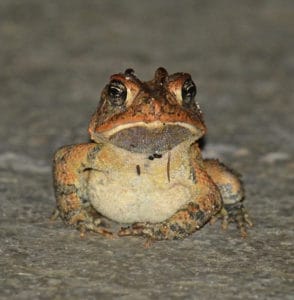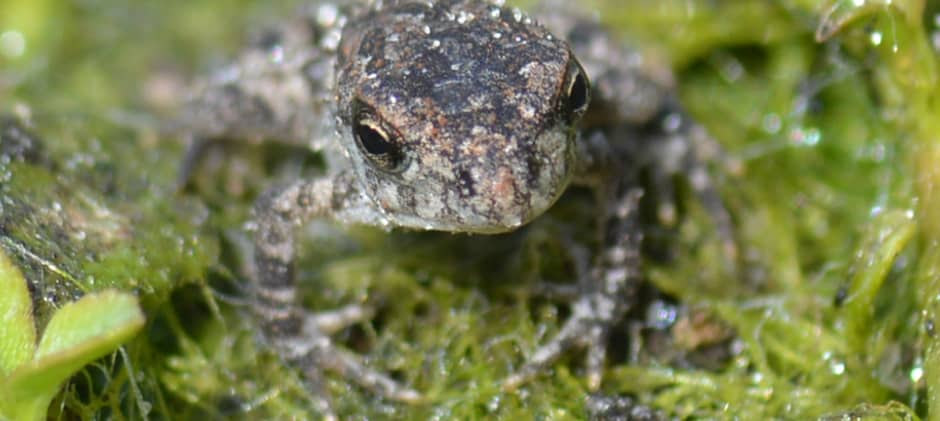Share this article
Cold-blooded but feverish, amphibians use heat to kill virus
They may be cold-blooded, but some amphibians induce feverish temperature changes to help their immune systems fight the deadly ranavirus.
“Amphibians are ectotherms, so they can’t regulate their temperature” independently from the ambient temperature around them, said Erin Sauer, a postdoctoral researcher in forest and wildlife ecology at the University of Wisconsin-Madison. But she and her co-authors on a study published recently in Functional Ecology found that southern toads (Anaxyrus terrestris), natives to the southeastern United States, employ a workaround. They use warmer environmental conditions to raise their body temperatures to feverish levels and fight the virus the way humans might use a Jacuzzi.

To conduct the experiment, researchers used long containers that had areas with different temperatures. ©Erin Sauer
Previous research had shown that amphibians preferring warmer temperatures were less likely to be infected with the chytrid fungus pathogen. Sauer and her co-authors found, in a study published in Proceedings of the Royal Society B, that behavioral fever-like conditions had less effect on the chytrid pathogen than individual temperature preference.
Sauer said she wasn’t surprised. Since chytrid is a fungal skin infection, she said, it wouldn’t necessary prompt amphibians to seek heat to fight it off. Fevers are usually associated with viruses, so she and her co-authors looked to see if ranavirus might have a different effect.
Inside a lab, they put 53 toads in long corridors that were cooler at one end and hotter at the other and measured their body temperatures four times a day for eight to nine days. Halfway through the experiment, they infected the toads with ranavirus, and measured their viral loads every day after that.

Cold-blooded toads infected with ranavirus heated themselves up to fever-like levels by staying longer in warmer areas. ©Jeremy Cohen
They found that the toads responded to the virus by spending more time in warmer areas than they did before they were infected. Sauer said “the fever was effective in reducing ranavirus loads.” Researchers believe the toads do this in the wild, too, allowing them to clear the virus.
There was no “magic threshold” of temperature the toads needed to reach to kill off the disease, she said. “A maximum temperature was not as predictive of disease reduction as just a change in temperature was.”
Heat alone isn’t likely killing the virus, she said. Instead, an “immunological cascade” is likely taking place, meaning the fever triggers the immune system to go into overdrive.
The discovery is important, Sauer said, because adult amphibians are usually more resistant to ranavirus, but researchers don’t have a great grasp on why. Fever might be one reason adults are able to fight off the disease better than larvae.
“With ranavirus you usually get die-outs in larval amphibians, not adults,” she said.
Since her research is one of only a handful to examine fever-like conditions in amphibians, she said more research is needed. As scientists try to understand how amphibians respond to ongoing threats like emerging infectious disease, habitat destruction and climate change, “it’s good to know what kind of tools they have in their toolbox to rapidly fight back,” Sauer said.
Header Image: Southern toads induce fever-like temperatures when they contract ranavirus. ©Jeremy Cohen








